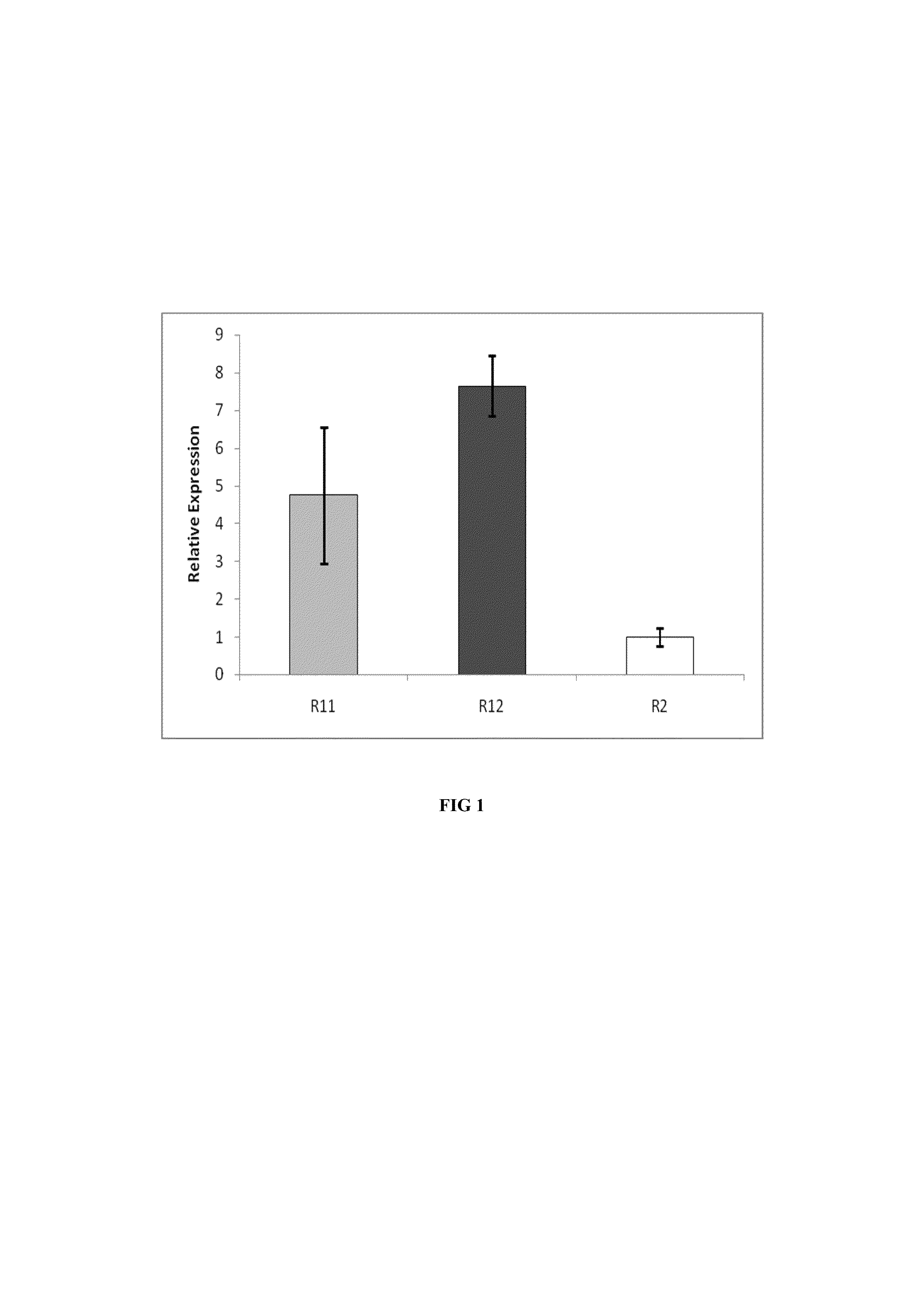Process for production of alcohols by microbial fermentation
a technology of microbial fermentation and alcohol, which is applied in the direction of fermentation, bacteria, biofuels, etc., can solve the problems of significant environmental impact, inability to economically sustain butanediol production in all geographies, and inability to meet the needs of microbial fermentation,
- Summary
- Abstract
- Description
- Claims
- Application Information
AI Technical Summary
Benefits of technology
Problems solved by technology
Method used
Image
Examples
example 1a
Production of 2,3-Butanediol by Fermentation
[0129]Fermentive conversion of a substrate, using Clostridium autoethanogenum was conducted in a CSTR reactor over a two week period, with periodic monitoring. The media used for the CSTR experiments were prepared in accordance with the components listed in Table E. The phosphate salt mixture consisted of 0.65 mM Na2HPO4 and 15.3 mM NaH2PO4. All other components such as the phosphoric acid, the ammonium salts and the cysteine-hydrochloride were mixed into 800 ml of water before the buffer salts were added to the solution. Proceeding in this manner ensured that the pH increased above about 6.5 avoiding the precipitation of media components. The solution was diluted to 1 L and made anaerobic by heating to boiling and allowing it to cool to room temperature under a constant flow of N2 gas. Once cool, the solution was adjusted to the final pH of 5.3 and the B vitamins added. Anaerobicity was maintained throughout the experiment. Carbohydrate (...
example 1b
Production of 2,3-Butanediol by Fermentation
[0131]In a further experiment, the conversion of a substrate by Clostridium autoethanogenum was conducted in a CSTR reactor over a 10 day period, with periodic monitoring. In this instance the fermenter and media were prepared in accordance with Example 1A, however the substrate was exclusively simulated steel mill gas (70% CO, 1% H2, 14% N2, 15% CO2) sparged continuously and the pH of the media was kept constant at 5.5 (Table 2). Conversion of the substrate again resulted in acetic acid, ethanol and 2,3-butanediol, demonstrating that even in the absence of a carbohydrate substrate at the commencement of the fermentation, acetic acid, ethanol and butanediol are produced.
TABLE 2Monitoring of production of 2,3-butanediol, ethanol and acetate(concentrations in g / L) over time in a CSTR batch reactor.Time\daysAcetic acidEthanol2,3-Butanediol000064.50.5010540.5
example 2
Production of 2,3-Butanediol by Fermentation
[0132]In a further experiment, the conversion of a substrate by Clostridium autoethanogenum was conducted in a CSTR reactor over a 3 day period, with periodic monitoring. In this instance, the fermenter and media were prepared in accordance with that described in Example 1A, however the substrate was simulated steel mill gas (70% CO, 1% H2, 14% N2, 15% CO2), sparged continuously and fructose (10 g / L) and the pH of the media was kept constant at 5.5 (Table 3). Conversion of the substrate again resulted in acetic acid, ethanol and 2,3-butanediol.
TABLE 3Monitoring of production of 2,3-butanediol, ethanol and acetate(concentrations in g / L) over time in a CSTR batch reactor.Time\hoursFructoseAcetic acidEthanol2,3-Butanediol010000159.80.80.20.05238.871.70.70.2395.33.72.30.9691.87.343.1
[0133]The final concentrations of acetate, ethanol and 2,3-butanediol were also compared between the fermenter experiments outlined in Examples 1A, 1B and 2, at th...
PUM
| Property | Measurement | Unit |
|---|---|---|
| pressure | aaaaa | aaaaa |
| pressure | aaaaa | aaaaa |
| pressures | aaaaa | aaaaa |
Abstract
Description
Claims
Application Information
 Login to View More
Login to View More - R&D
- Intellectual Property
- Life Sciences
- Materials
- Tech Scout
- Unparalleled Data Quality
- Higher Quality Content
- 60% Fewer Hallucinations
Browse by: Latest US Patents, China's latest patents, Technical Efficacy Thesaurus, Application Domain, Technology Topic, Popular Technical Reports.
© 2025 PatSnap. All rights reserved.Legal|Privacy policy|Modern Slavery Act Transparency Statement|Sitemap|About US| Contact US: help@patsnap.com


